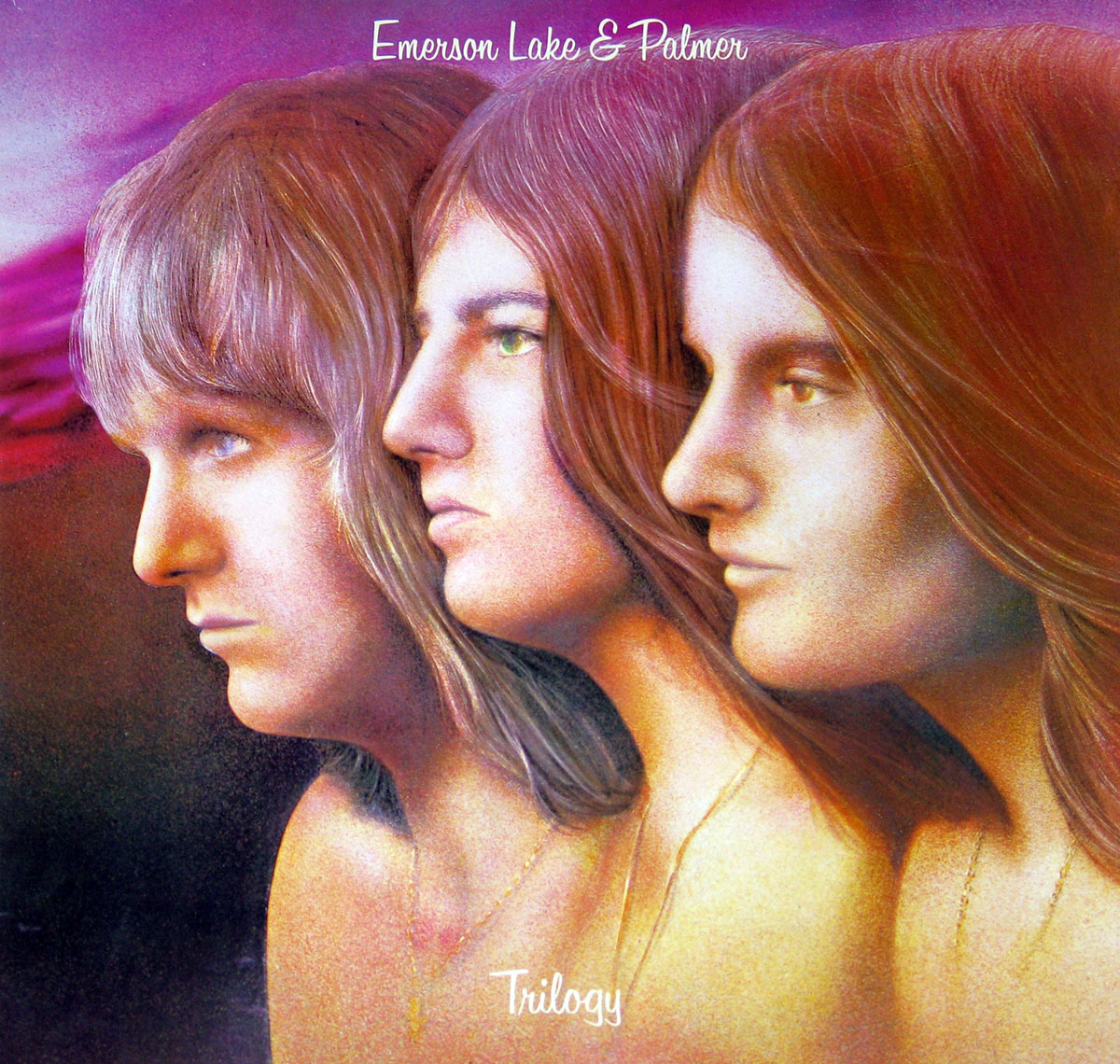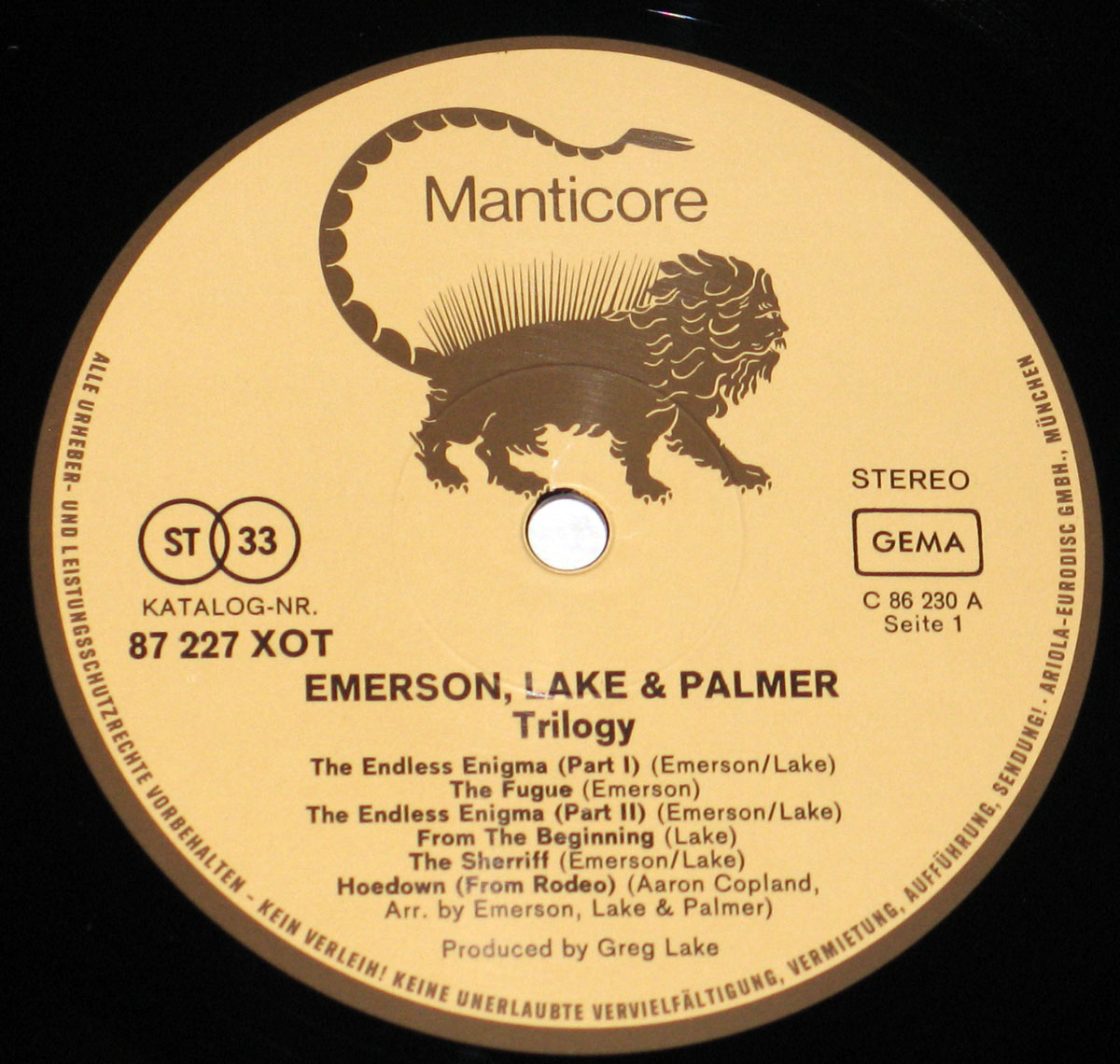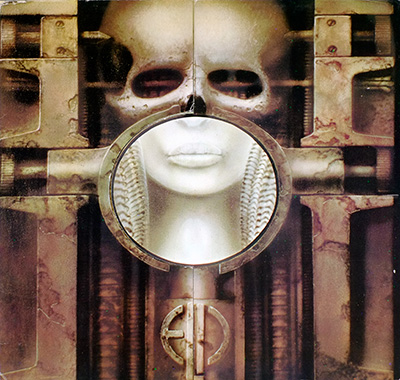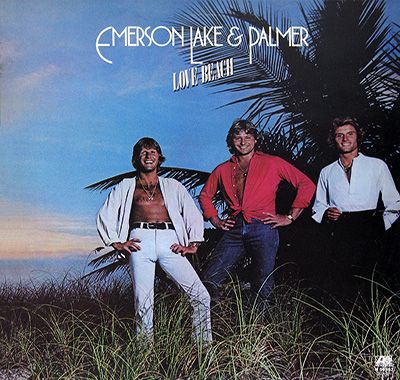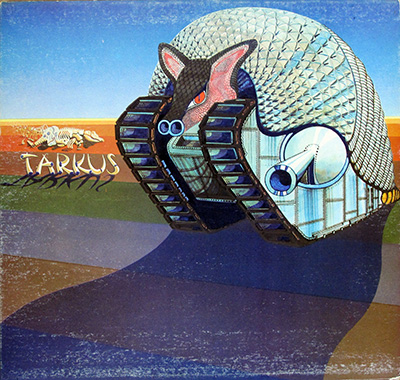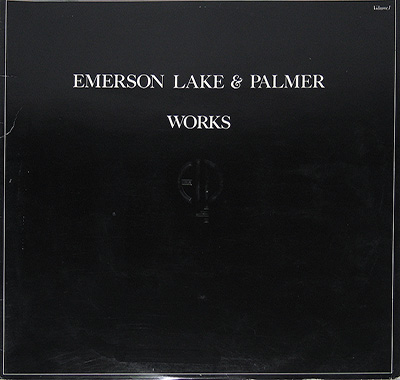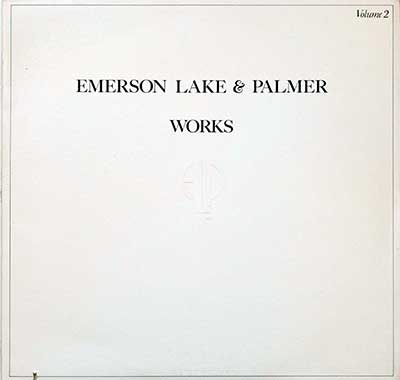Emerson, Lake & Palmer - Trilogy Album Description:
Emerson, Lake & Palmer, the pioneering British progressive rock band, left an indelible mark on the music scene with their third studio album, "Trilogy". Released in 1972, this opus showcased the group's exceptional musicianship and innovative approach to songwriting. With its complex arrangements, virtuosic performances, and imaginative concepts, "Trilogy" established ELP as one of the genre's most influential acts. The German release of the 12" LP vinyl album not only preserved the sonic brilliance of the original recording but also featured stunning album cover art designed by the legendary team at Hipgnosis.
One of the standout features of "Trilogy" is the production expertise of Eddie Offord, who served as the album's production engineer. Offord, renowned for his work with other progressive rock acts, captured ELP's dynamic sound with remarkable clarity and depth. His meticulous attention to detail allowed the intricate layers of the band's compositions to shine through, enhancing the listening experience. From the thunderous drums to the rich tapestry of keyboard textures and Greg Lake's melodic bass lines, every element was meticulously crafted to create a sonic journey like no other.
The album's cover art, designed by Hipgnosis, added a visual dimension to the music. Hipgnosis, known for their iconic artwork on numerous album covers, brought their imaginative and surreal style to "Trilogy". The German release of the LP vinyl album showcased their creativity through a striking visual representation. The artwork depicted a mysterious hand emerging from the ocean, cradling a sparkling blue orb. This image captured the album's themes of exploration, evolution, and the interconnectedness of the natural world. The cover art perfectly complemented the music, enticing listeners to delve into the ethereal realms of ELP's musical universe.
"Trilogy" as an album exemplifies the progressive rock movement of the early 1970s. ELP's fusion of classical music influences, rock instrumentation, and avant-garde experimentation set them apart from their contemporaries. The album's title track, "Trilogy", is an epic composition divided into three distinct sections, each showcasing the individual virtuosity of Keith Emerson, Greg Lake, and Carl Palmer, while also highlighting their seamless collaboration as a band. From the gentle and introspective passages to the bombastic and grandiose moments, the track takes listeners on a sonic journey that is both musically challenging and emotionally engaging.
Other notable tracks on the album include "The Endless Enigma", which combines haunting melodies, intricate keyboard work, and complex time signatures, displaying ELP's technical prowess. "From the Beginning" introduces a softer and more melodic side, featuring Greg Lake's soothing vocals and acoustic guitar work, demonstrating the band's ability to create radio-friendly songs without compromising their progressive leanings. The album also includes a captivating instrumental piece titled "Abaddon's Bolero", which showcases Emerson's virtuosic keyboard skills and Palmer's thunderous drumming, culminating in a crescendo of sonic intensity.
